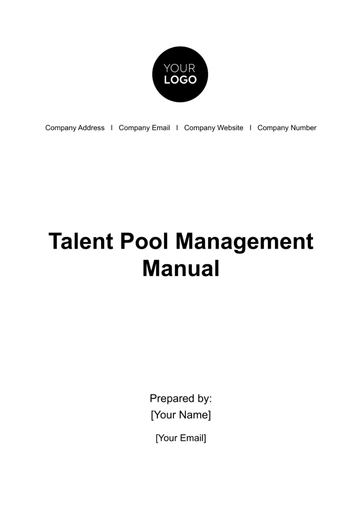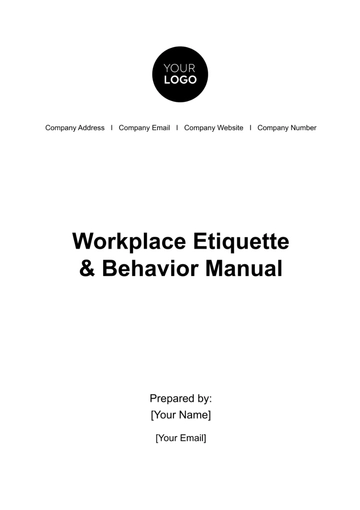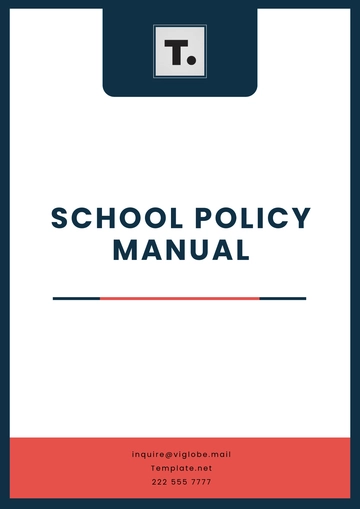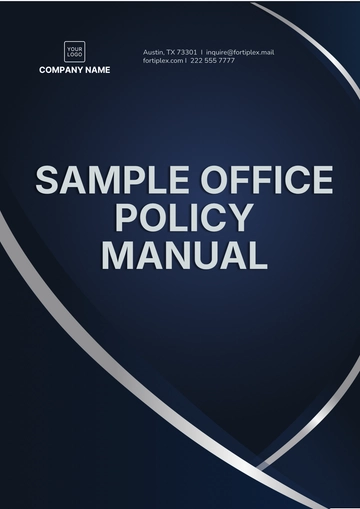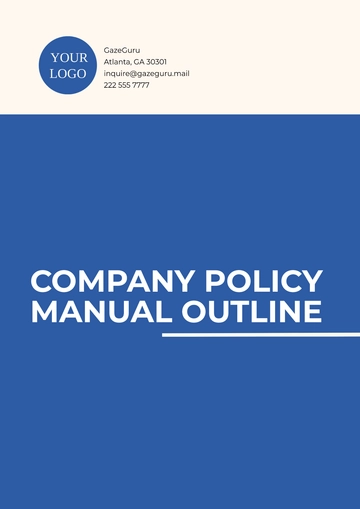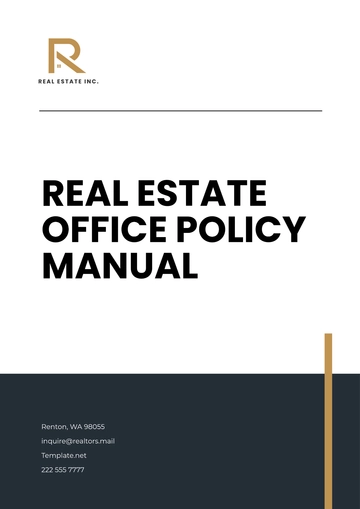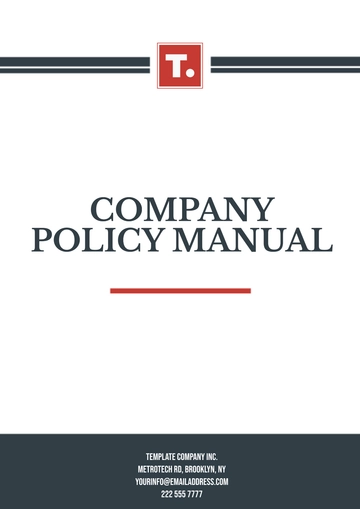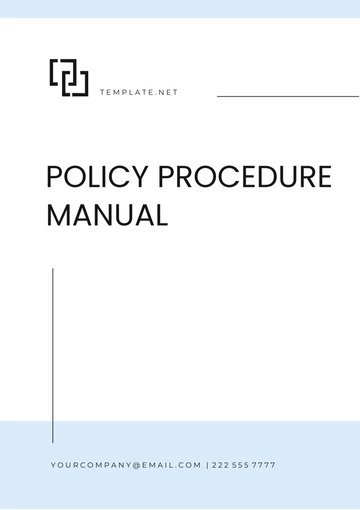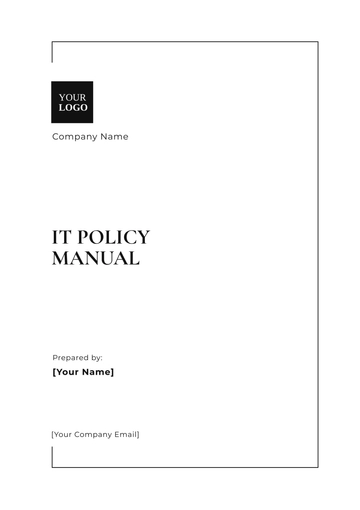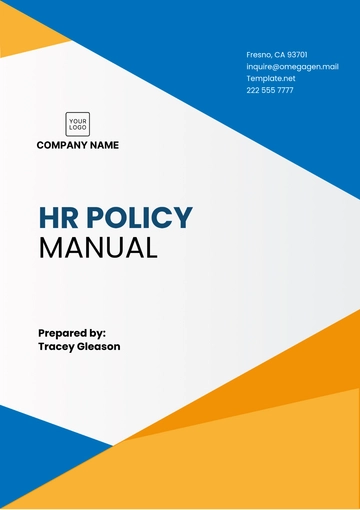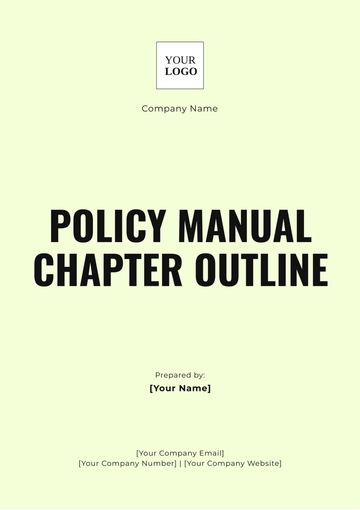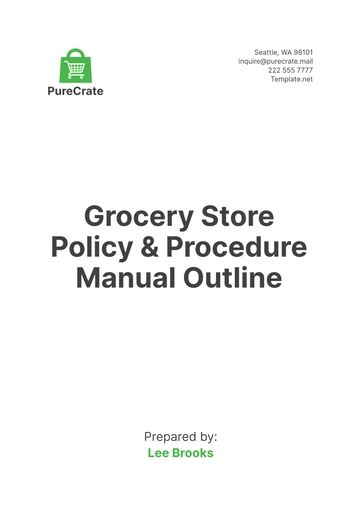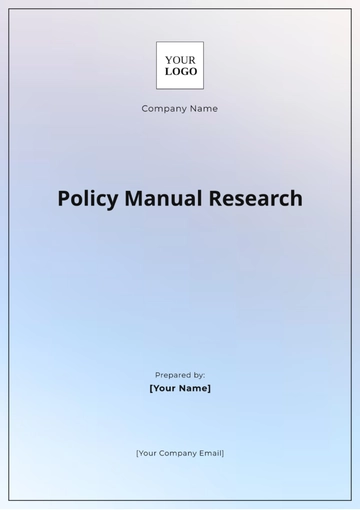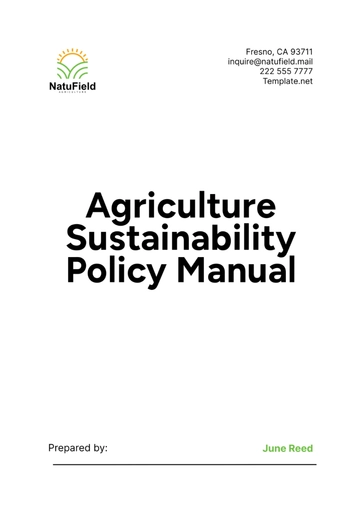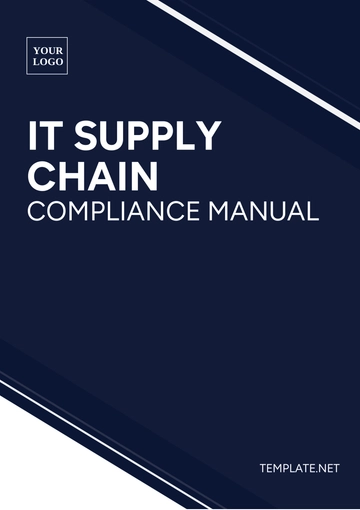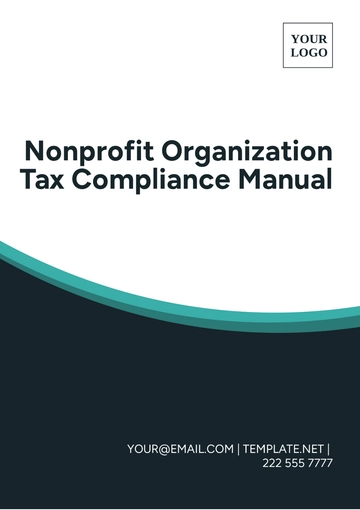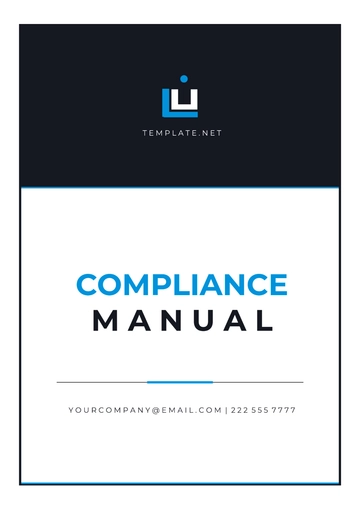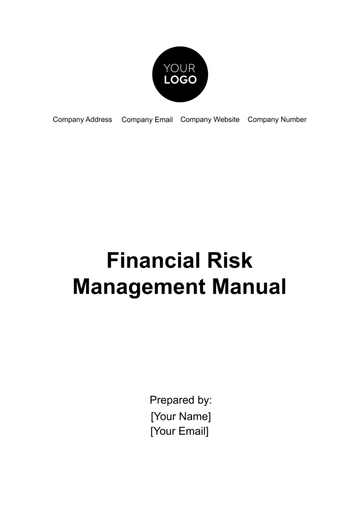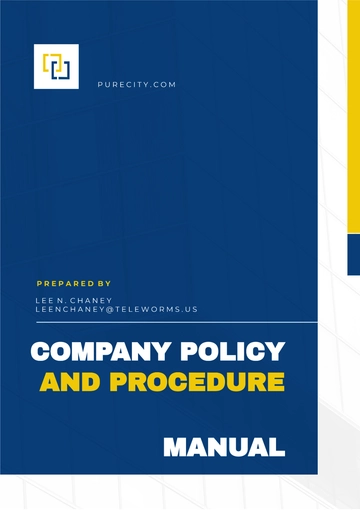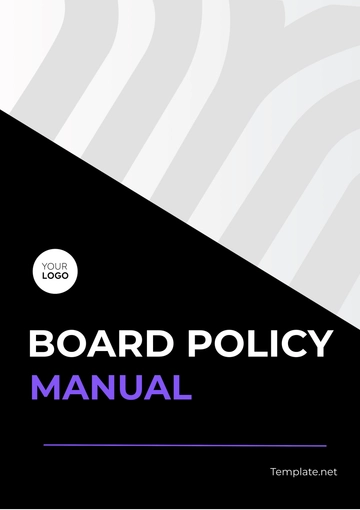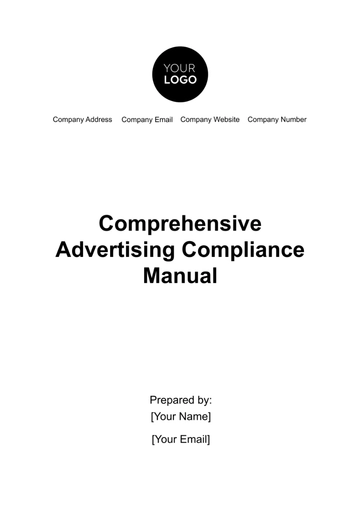Free Agriculture Sustainability Policy Manual
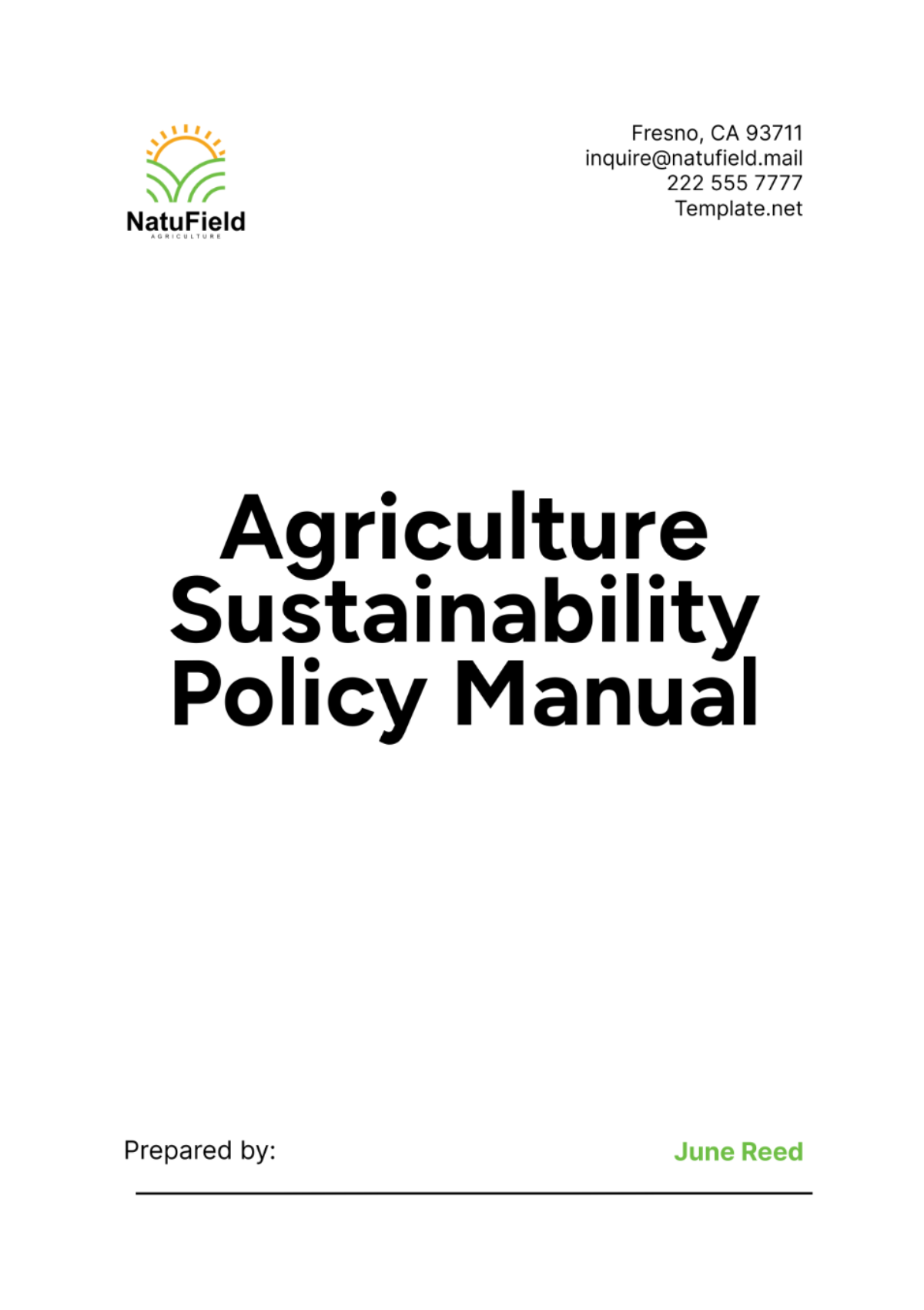
I. Introduction
A. Purpose of the Manual
The Agriculture Sustainability Policy Manual serves as a foundational document outlining [Your Company Name]'s holistic approach to sustainable agriculture. It provides guidance and standards for integrating environmental stewardship, social responsibility, and economic viability into our daily operations. By outlining clear objectives and strategies, this manual aims to ensure consistency and accountability in our sustainability efforts.
B. Importance of Sustainability in Agriculture
Sustainable agriculture is pivotal in safeguarding natural resources, enhancing ecosystem resilience, and meeting the growing demand for food production in a changing climate. At [Your Company Name], we recognize that sustainable practices not only mitigate environmental impacts but also contribute to long-term profitability and resilience against market fluctuations and regulatory changes.
C. Organization's Commitment to Sustainability
[Your Company Name] is deeply committed to sustainable agriculture as a core value that guides our business decisions and operational practices. We prioritize transparency and accountability in our sustainability initiatives, aiming to build trust with stakeholders and foster a positive impact on the environment and local communities.
II. Sustainability Principles
A. Core Values and Ethics
Our sustainability efforts are grounded in principles of integrity, transparency, and ethical stewardship of natural resources. We uphold these values in every aspect of our operations, from farm management practices to supply chain partnerships, ensuring alignment with our sustainability goals and societal expectations.
B. Integration of Sustainability into Operations
Sustainability is not merely an add-on but a fundamental aspect of our business strategy. We integrate sustainable practices into crop production, livestock management, and resource utilization to optimize efficiency, reduce waste, and enhance environmental resilience across our agricultural operations.
C. Stakeholder Engagement and Communication
We engage stakeholders through regular communication channels, seeking input and feedback to inform our sustainability initiatives. By fostering collaborative partnerships with employees, suppliers, customers, and local communities, we ensure that our sustainability practices reflect diverse perspectives and contribute positively to shared goals.
III. Resource Management
A. Water Management
Irrigation Practices
Our approach to irrigation prioritizes the efficient use of water resources by employing advanced technologies designed specifically for precision irrigation, which include systems such as drip irrigation and micro-sprinklers. These sophisticated methods are intentionally crafted to minimize the loss of water that typically occurs through evaporation and runoff. By implementing these techniques, we ensure that crops receive the optimal level of moisture necessary for their growth, thereby promoting agricultural productivity. At the same time, we are dedicated to conserving our vital water resources, making our irrigation practices both sustainable and highly effective.
Water Conservation Techniques
Water conservation plays a fundamental and essential role in our overall operations. To ensure that we utilize water resources as efficiently as possible, we have implemented a comprehensive strategy that includes soil moisture monitoring and precise water scheduling. This approach is meticulously tailored based on the specific needs of our crops as well as prevailing weather patterns. By doing so, we are able to optimize the efficiency of our irrigation systems.In addition to these measures, we are also making significant investments in both water storage solutions and rainwater harvesting infrastructure. These initiatives collectively enhance our ability to manage water resources in a sustainable manner, ensuring that we are well-prepared to meet current and future water demands in an environmentally responsible way.
B. Soil Health and Conservation
Soil Testing and Nutrient Management
To ensure the health of the soil, we engage in the consistent practice of testing the soil to monitor its condition, as well as developing and implementing nutrient management plans that are specifically customized to meet the unique needs of the crops being cultivated. Our approach places a strong emphasis on the use of organic soil amendments, which help to enrich the soil naturally. Additionally, we prioritize the implementation of cover cropping techniques, which involve planting certain crops to cover the soil and protect it from erosion while enhancing its nutrient content.
Another key practice we adopt is rotational grazing, where livestock are moved between pastures to prevent overgrazing and promote even distribution of organic matter. These combined practices aim to significantly enhance the soil's structure, increase its fertility, and boost its ability to sequester carbon, all of which contribute to the long-term sustainability and productivity of the agricultural ecosystem.
Erosion Control Measures
In order to prevent soil erosion and sustain the integrity of the soil, we employ a variety of agricultural practices including contour farming, terracing, and the establishment of vegetative buffers along waterways. By implementing these measures, we are able to significantly reduce the amount of sediment that is washed into water bodies. Additionally, these techniques help in protecting the overall health of the soil, which is crucial for maintaining agricultural productivity.
C. Energy Efficiency
Renewable Energy Use
[Your Company Name] harnesses renewable energy sources, including solar photovoltaic systems and wind turbines, as a means to significantly reduce greenhouse gas emissions and diminish reliance on fossil fuels. This strategic investment in renewable energy technology not only plays a crucial role in lowering our overall carbon footprint but also contributes to substantial long-term cost savings. Additionally, by focusing on renewable energy, we are fostering greater energy independence for our operations.
Energy Conservation Strategies
Conducting thorough energy audits and implementing comprehensive efficiency upgrades throughout our various facilities and equipment serve as key initiatives to foster energy conservation. In our commitment to sustainability, we place a high priority on the adoption and use of energy-efficient lighting solutions, advanced Heating, Ventilation, and Air Conditioning (HVAC) systems, and the continuous upgrading of equipment. These measures are meticulously designed to significantly reduce energy consumption while ensuring that our operations remain at their peak performance and operational conditions are consistently optimal.
IV. Environmental Protection
A. Biodiversity Conservation
Habitat Restoration Efforts
We are deeply committed to the active restoration and preservation of natural habitats within our agricultural landscapes, with the overarching goal of supporting and fostering biodiversity. Our efforts in habitat restoration encompass a wide array of projects designed to rejuvenate and sustain the environment. These initiatives include the extensive reforestation of areas that have been previously deforested or degraded, aiming to regenerate native forests that can provide shelter and food for a multitude of species.
We also engage in extensive wetland restoration to preserve water quality, reduce flood risks, and provide essential habitats for a variety of wildlife; we plant native species to establish ecological corridors, improving habitats and supporting biodiversity, which harmonizes agricultural productivity with environmental care, fostering a sustainable ecosystem for the future.
Wildlife Management Practices
Integrated pest management (IPM) strategies and wildlife-friendly farming practices minimize adverse impacts on wildlife populations. We monitor wildlife habitats and collaborate with conservation organizations to protect endangered species and promote biodiversity conservation.
B. Pollution Prevention
Waste Management Procedures
[Your Company Name] executes a wide-ranging and detailed series of waste management protocols with the goal of minimizing waste produced by agricultural activities and simultaneously reducing the overall impact on the environment. Our company's approach places immense priority on recycling practices, ensuring that reusable materials are appropriately processed and reintroduced into the production cycle where possible.
We focus on composting organic materials to create nutrient-rich soil additives and responsibly disposing of hazardous substances to minimize pollution, thus promoting sustainable agriculture by reducing waste and optimizing resources.
Chemical Use and Pesticide Management
Integrated pest management, commonly abbreviated as IPM, principles underpin and direct our comprehensive approach to the utilization of pesticides. This method places significant emphasis on biological control measures, the practice of crop rotation, and the selection and cultivation of crop varieties that are naturally resistant to pests. By following strict adherence to the established guidelines for pesticide application and engaging in regular and thorough monitoring procedures, we aim to minimize the risk of environmental contamination. These efforts collectively contribute to the safeguarding of the overall health of the ecosystem.
V. Social Responsibility
A. Labor Practices
Fair Employment Policies
[Your Company Name] adheres to fair labor standards, providing equal employment opportunities, safe working conditions, and competitive wages and benefits to all employees. Our commitment to fair employment practices ensures a respectful and inclusive workplace culture where employees can thrive.
Worker Health and Safety
Occupational health and safety hold the utmost importance in all our operational activities. To ensure this, we take several comprehensive measures. Firstly, we organize and conduct regular safety training sessions for our employees. These sessions are designed to educate and inform them about potential hazards, safe practices, and emergency procedures, thereby equipping them with the necessary knowledge and skills to prevent accidents and injuries. We provide employees with PPE like helmets, gloves, goggles, and vests for physical protection and implement ergonomic practices, including adjusted workstations, supportive seating, and regular breaks, to reduce injury risks. This commitment prioritizes employee well-being and minimizes workplace hazards.
B. Community Engagement
Local Community Support Initiatives
We actively contribute to the local community through partnerships, sponsorships, and charitable donations that benefit educational programs, community events, and sustainable development initiatives. By investing in the community, we foster positive relationships and promote economic growth and social cohesion.
Public Education and Outreach Programs
Educational workshops, farm tours, and outreach events engage community members in understanding sustainable agriculture practices and environmental stewardship. We collaborate with schools, universities, and local organizations to raise awareness about food production, conservation, and sustainable living.
VI. Economic Viability
A. Financial Sustainability
Budgeting and Financial Planning
[Your Company Name] practices sound financial management by developing annual budgets, financial forecasts, and investment strategies that align with our sustainability goals. Strategic resource allocation and cost-effective practices ensure financial stability and support long-term growth and resilience.
Economic Risk Management
We mitigate economic risks through proactive risk assessment and contingency planning. Diversified revenue streams, market analysis, and insurance coverage protect against market volatility, natural disasters, and other economic uncertainties, ensuring continuity of operations and sustainable financial performance.
B. Market Access and Sustainability Certifications
Certification Processes
[Your Company Name] seeks out widely acknowledged sustainability certifications, including but not limited to Organic, Fair Trade, and Global GAP, to substantiate our dedication to sustainable practices. By undergoing rigorous certification audits and adhering to internationally recognized standards, we aim to improve transparency, bolster our credibility, and enhance our competitive edge in the marketplace.
Market Opportunities for Sustainable Products
We capitalize on growing consumer demand for sustainably produced agricultural products by developing marketing strategies that highlight our sustainable practices. Partnerships with retailers, certification labels, and direct-to-consumer channels expand market access and promote the value of sustainable agriculture.
VII. Implementation Strategies
A. Training and Capacity Building
Staff Training Programs
Ongoing training programs empower employees with knowledge and skills in sustainable agriculture, environmental stewardship, and regulatory compliance. We invest in professional development to cultivate a skilled workforce capable of driving innovation and implementing best practices.
Skill Development Workshops
Specialized workshops and certifications enhance employee expertise in areas such as organic farming techniques, precision agriculture technologies, and renewable energy applications. By fostering continuous learning and skill enhancement, we equip our team to address evolving challenges and opportunities in sustainable agriculture.
B. Monitoring and Evaluation
Performance Metrics and Indicators
Key performance indicators (KPIs) track progress toward sustainability goals, including resource efficiency, environmental impact reduction, and community engagement metrics. Regular data collection and analysis inform decision-making and facilitate continuous improvement in sustainability performance.
Regular Audits and Reviews
We conduct internal audits and external reviews to assess compliance with sustainability standards, regulatory requirements, and operational benchmarks. Audit findings guide corrective actions and strategic adjustments, ensuring alignment with organizational goals and stakeholder expectations.
VIII. Compliance and Regulations
A. Legal Requirements and Standards
Regulatory Compliance Procedures
[Your Company Name] adheres to stringent local, state, and federal regulations governing agriculture, environmental protection, and occupational health and safety. We maintain comprehensive compliance protocols, including permit applications, regulatory reporting, and proactive engagement with regulatory authorities.
Environmental Permitting and Reporting
Transparent reporting and documentation of environmental performance demonstrate our commitment to regulatory compliance and environmental stewardship. We uphold rigorous standards for environmental monitoring, reporting environmental impacts, and maintaining regulatory approvals.
IX. Continuous Improvement
A. Feedback Mechanisms
Stakeholder Feedback Processes
We actively seek feedback from stakeholders, including employees, customers, suppliers, and community members, through surveys, focus groups, and consultation forums. Stakeholder input informs our sustainability strategies and initiatives, fostering transparency and accountability.
Continuous Improvement Initiatives
Continuous improvement is embedded in our culture, driven by data-driven insights and innovation. We prioritize research and development of sustainable technologies, operational efficiencies, and community engagement strategies to achieve measurable advancements in sustainability performance.
B. Adaptation to Changing Conditions
Climate Change Adaptation Strategies
[Your Company Name] develops adaptive strategies to mitigate and adapt to climate change impacts such as extreme weather events, water scarcity, and shifting growing seasons. Resilience planning includes crop diversification, water management strategies, and infrastructure investments to ensure agricultural productivity and environmental sustainability.
Innovation in Sustainable Practices
We invest in research, partnerships, and pilot projects to pioneer sustainable agriculture practices and technologies. Collaboration with industry experts, academia, and research institutions drives innovation in soil health, renewable energy, precision agriculture, and ecosystem conservation, positioning us as a leader in sustainable agriculture innovation.
- 100% Customizable, free editor
- Access 1 Million+ Templates, photo’s & graphics
- Download or share as a template
- Click and replace photos, graphics, text, backgrounds
- Resize, crop, AI write & more
- Access advanced editor
Simplify your sustainability strategy with the Agriculture Sustainability Policy Manual Template from Template.net. This editable and customizable document features a user-friendly interface and AI Editor Tool, making it effortless to tailor policies to your agricultural operations. Ensure compliance, enhance environmental stewardship, and foster community engagement with this comprehensive template, designed to streamline your sustainability initiatives.
